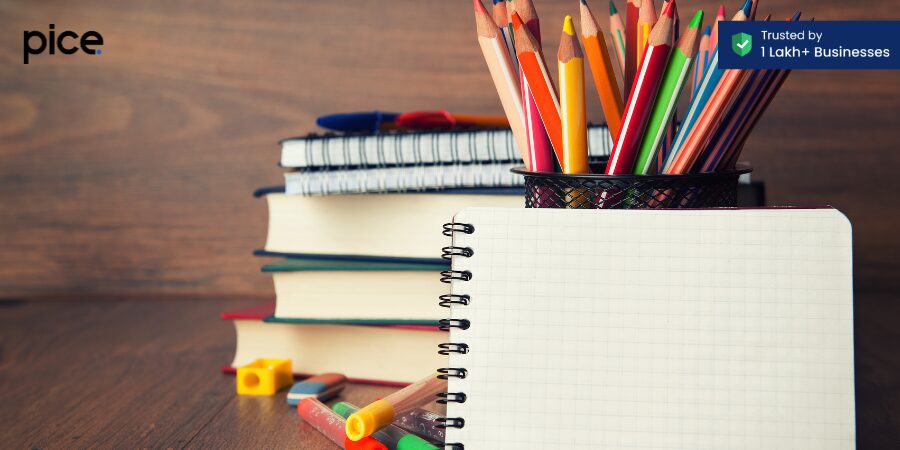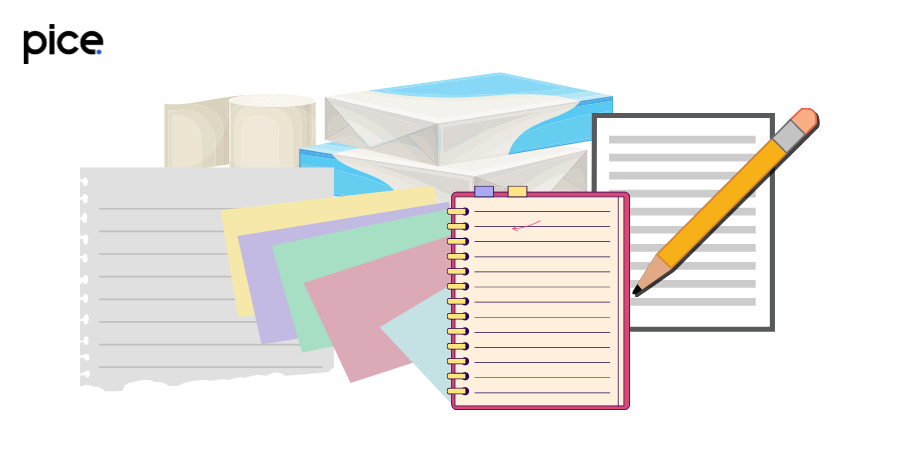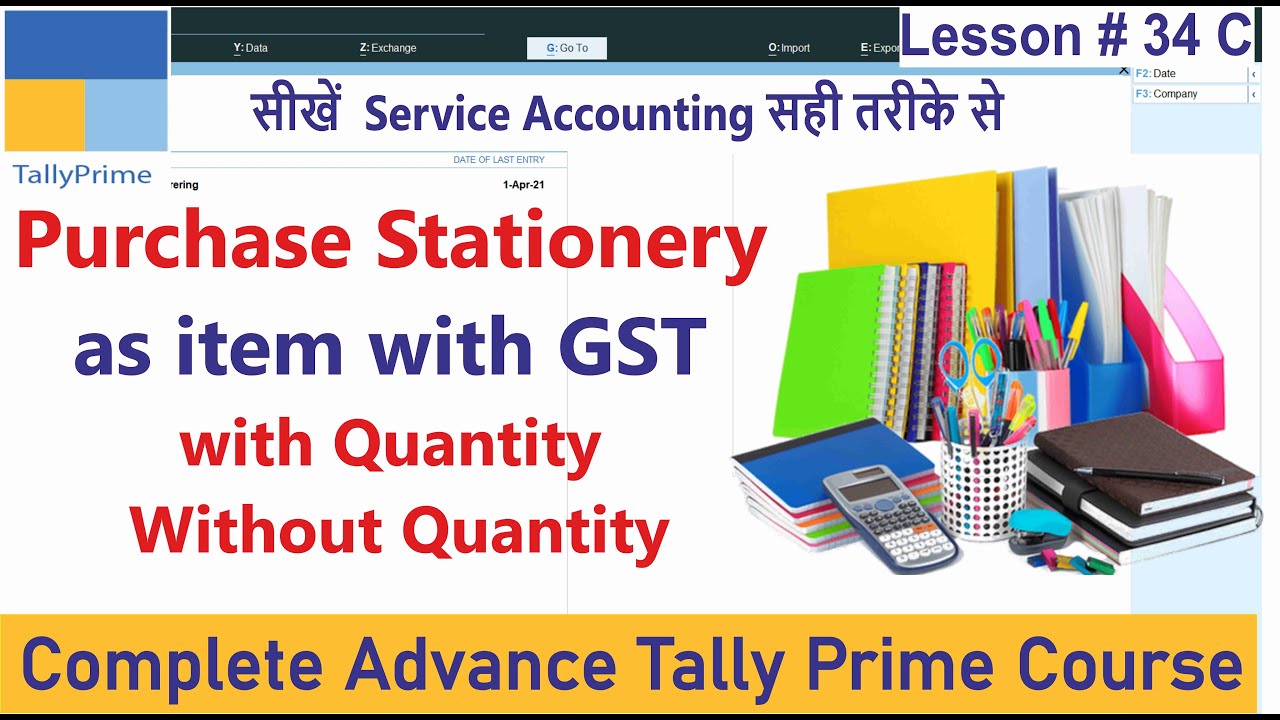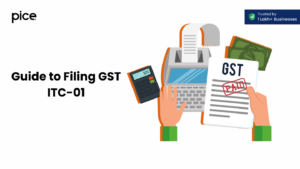GST Rate for Diary & Other Stationary Products
- 23 Aug 24
- 6 mins

GST Rate for Diary & Other Stationary Products
Key Takeaways
- Pens are taxed at 18% under the GST regime.
- Stationery items fall under different GST rates, mainly 12% and 18%.
- GST adds a specific tax rate to the base price of stationery products.
- Businesses can claim input tax credit (ITC) on stationery used for business purposes.
- HSN codes classify goods for accurate GST rate application and compliance.
Goods and Services Tax (GST) has revolutionized the tax landscape in many countries, including India. For businesses and consumers alike, understanding the GST rates applicable to various products is crucial for compliance and cost management. In this article, we explain the GST rates for diary, stationery products, a category that encompasses a wide range of essential items used in offices, schools, and homes.
GST Rate on Stationery Items and HSN Codes

To streamline tax processes and ensure uniformity, the GST regime employs HSN (Harmonized System of Nomenclature) codes. These codes classify goods into specific categories, making it easier to determine applicable tax rates. Stationery items, being diverse, fall under multiple HSN codes, each attracting different GST rates mentioned below.
| Stationery Item | HSN Code | GST Rate |
| Carbon Paper | 4809 | 18% |
| Uncoated Paper | 4802 | 12% |
| Graph Book | 4820 | 12% |
| Receipt Books | 4820 | 12% |
| Letter Pads | 4820 | 12% |
| Self-Copy Paper | 4809 | 18% |
| Transfer Papers | 4809 | 18% |
| Greaseproof Paper | 4806 | 18% |
| Paper Trays | 4823 | 18% |
| Book Covers | 4820 | 12% |
| Correspondence Cards | 4820 | 12% |
| Letter Cards | 4820 | 12% |
| Manifold Business Forms | 4820 | 12% |
| Slate Pencils | 9609 | 18% |
| Memorandum Pads | 4820 | 12% |
| Paint Pads | 9603 | 18% |
| Plain Postcards | 4817 | 12% |
| Interleaved Carbon Sets | 4809 | 18% |
| Pen Trays | 3926 | 18% |
| Assortment Of Paper Stationery | 4820 | 12% |
| Paper Knives | 8211 | 18% |
| Aseptic Packaging Paper | 4811 | 18% |
| Paper Pulp | 4701 | 12% |
| Composite Paper | 4807 | 12% |
| Corrugated Paper | 4808 | 12% |
| Glassine Paper | 4806 | 18% |
| Paper For Duplicator Stencils | 4809 | 18% |
| Post Card | 4817 | 12% |
| Writing Blocks | 4820 | 12% |
| Pencil Sharpeners | 8214 | 18% |
| Topographical Plans | 4905 | 12% |
| Wall Maps | 4905 | 12% |
| Feather Dusters | 9603 | 18% |
| Letter Corners | 4820 | 12% |
GST Rate for Pen
Pens, an indispensable part of stationery, are subject to varying GST rates depending on their type and value. Generally, the GST rate for pens is set at 18%. However, certain pens, particularly those that are more specialized or luxurious, might attract different rates.
12% GST Rate for Select Stationery Products and Pens
Some stationery items are taxed at a 12% GST rate. This category includes specific types of pens and other essential stationery products that are considered necessary for everyday use. The rationale behind this rate is to keep essential items affordable while ensuring a reasonable tax contribution.
Stationery Products and Pens are taxed at 18% under GST
Many stationery products fall under the 18% GST bracket. This includes a wide range of items, from regular pens to more specialized office supplies. The higher rate applies to products deemed non-essential or those that offer added value beyond basic functionality.
GST on Metallic Stationery Products
Metallic stationery products, such as staplers, paper clips, and metallic rulers, generally attract an 18% GST rate. These items, often seen as durable and long-lasting, fall into the higher tax bracket due to their material and construction costs.
GST Rates for Paper-Based Stationery Products

Paper-based stationery items, like notebooks, printing paper, and envelopes, also fall under different GST rates based on their type and use.
Paper-Based Stationery Products Taxed at 12% GST
Certain essential paper-based products are taxed at a 12% GST rate. This includes items like exercise books and specific types of writing paper. The lower rate aims to keep educational and essential office supplies affordable.
Paper-Based Stationery Products Taxed at 18% GST
Other paper-based products, particularly those used for specialized or non-essential purposes, are taxed at an 18% rate. This includes premium notebooks, decorative paper, and specialized printing paper.
ITC on Stationery Items Under GST
Input Tax Credit (ITC) is a significant feature of the GST system, allowing businesses to claim credit for the tax paid on inputs used in their operations. For stationery items, businesses can avail ITC, provided these items are used for business purposes and proper documentation is maintained.
From Pulp to Print: GST's Influence on the Paper Industry
The implementation of GST has significantly impacted the paper industry, from the manufacturing of pulp to the final printed products. The industry has had to adapt to the uniform tax structure, leading to changes in pricing, supply chain management, and overall business operations.
Conclusion
The GST rates for stationery products are essential for both consumers and businesses. By knowing which items are taxed at 12% and which at 18%, one can make informed purchasing decisions and ensure compliance with tax regulations. The GST system, with its structured approach, aims to create a balanced tax environment while keeping essential products accessible.
💡Learn more about how our Pice app can help you make all your important business payments, like supplier and vendor payments, rent, GST, & utility, from one single dashboard with your credit card. Request a demo now.



















